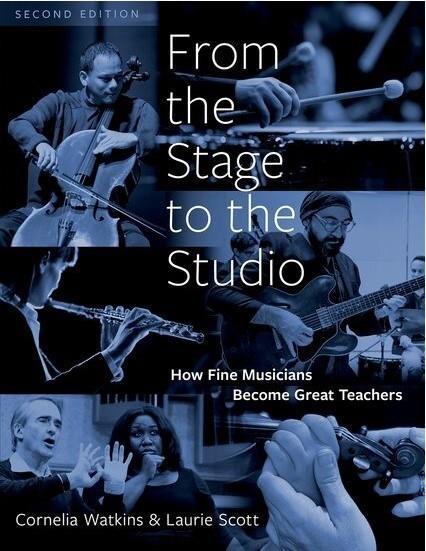Philippa Bunting reviews the second edition of Cornelia Watkins’ and Laurie Scott’s treatise on music education

From the Stage to the Studio: How Fine Musicians Become Great Teachers (Second edition)
Cornelia Watkins, Laurie Scott
336PP ISBN 9780197578667
Oxford University Press £81
When the first edition of From Stage to Studio was published in 2012, it was to a hugely positive critical reaction from pedagogues and performers alike, inviting phrases such as ‘I am stunned, amazed and forever grateful’ (Richard Stoltzman), ‘an essential keystone’ (Eric Booth) and ‘invaluable’ (Barry Green).
At that time, the foreword by Stephen Clapp referenced the more than 60 years of combined experience Watkins and Scott had brought to the work. Now, with this welcome second edition, that figure rises to over 80, and the generosity and wisdom that suffused the first book is enhanced in the process.
The central premises of the book – to identify the areas of congruence between artistry in musical performance and teaching excellence, and to build strong bridges between them by offering impassioned yet concrete and pragmatic advice – remain unchanged, the decade that has passed since the first edition in no way dimming the power and value of its original message.
In a world in which instrumental teachers can have a very hit-and-miss experience as they feel their way into the profession, this book is like a torch beam, highlighting the path to a world of generative and creative instrumental teaching. It is the kind that learners and teachers will alike find affirming, and will enjoy, and one that considers both as whole human beings with histories, preferences, failings and foibles, looking to enjoy together a lifetime in music. Though the advice the authors offer is designed to make musician teachers feel better about themselves, it is not done in a facile, self-comforting way, but one that encourages us all to appreciate what we uniquely bring, and to draw wisdom from within ourselves that we did not know was there.
Read: Music teacher recruitment numbers in peril, according to new research
Read: Music teacher vs instrumental tutor: is there a difference?
In this second edition, with the benefit of further reflection, feedback and active use of the book with others, the authors have sought to address the areas they felt they ‘could, simply put, do better’. This they have done by updating and expanding references, streamlining discussions and allowing more space for reader responses. OUP has also applied higher design standards, adding pictures to make the book visually more engaging. Prompts to self-reflection are made more prominent, encouraging readers to engage directly with the book and to keep a record of their insights as they move through it.
The introduction ends with a quote from pianist Karl Paulnack, who said, in a welcome address to Boston Conservatory music students: ‘You’re here to become a sort of therapist for the human soul, a spiritual version of a chiropractor, physical therapist, someone who works with our insides to see if they get things to line up, to see if we can come into harmony with ourselves and be healthy and happy and well.’ Not a bad mantra for those who choose the profession of music educator either.
PHILIPPA BUNTING























































No comments yet